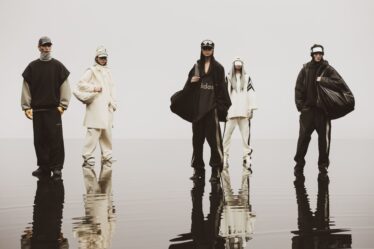
Eighteen months ago, Global Fashion Agenda chairman Thomas Tochtermann had a frank discussion with a group of the world’s most powerful fashion CEOs.
Companies’ individual efforts to reduce planet-warming emissions in their value chains simply weren’t tackling the problem at the scale needed to meet critical climate commitments by the end of the decade, he told them. Instead, brands needed to be thinking more ambitiously about investing collectively to help shift the energy mix in major manufacturing countries — where most of fashion’s environmental impact takes place — from fossil fuels to renewables.
“I was a bit provoking,” said Tochtermann.
At the UN’s annual COP climate summit in Dubai on Tuesday, GFA is set to announce a $100 million pledge by Bestseller and H&M Group to support developing renewable energy capacity in Bangladesh, one of the world’s largest garment manufacturing hubs.
The two companies are anchoring a fund put together by GFA to invest in the country’s first utility-scale offshore wind farm, a $1.3 billion project led by renewable-energy investment firm Copenhagen Infrastructure Partners.
The goal is to establish a replicable model to tackle one of fashion’s most fundamental sustainability challenges: how to finance the vast sums of money needed to decarbonise the industry.
“We need to supplement what we are doing already … this is somewhat of a shift in the mindset,” said Bestseller CFO Thomas Børglum Jensen. “The most important thing is to get going on decarbonising the industry.”
Over the next 25 years, some $380 billion is needed simply to develop renewable electricity supply for the sector, according to an analysis by Fashion for Good and the Apparel Impact Institute. But the challenge isn’t just the level of investment required.
Most of fashion’s environmental impact takes place during the manufacturing process, in factories brands don’t directly own, that connect to power grids in countries that predominantly run on fossil fuels. It’s this cheap energy that has helped power the industry, and with most of the value creation and financial rewards in the hands of brands, and not local suppliers, there’s growing recognition that it’s the brands that need to take responsibility for the clean up. But changing that infrastructure requires big capital outlays with long payback times that fashion brands have not historically been set up to accommodate.
“It’s really hard for a fashion brand to invest directly in renewable energy at a large scale,” said H&M’s head of green investment, Ulrika Leverenz.
The model GFA, Bestseller and H&M are testing in Bangladesh aims to break down some of these hurdles by offering brands a chance to invest collectively in an existing development project. Though currently still in its early stages, if successful the proposed wind farm will start operation in 2028 with a generating capacity of 500 megawatts. It’s expected to reduce the country’s emissions by 725,000 tonnes annually.
It’s both a big leap and a drop in the bucket compared to the scale of the challenge facing the industry. Based on its current trajectory, fashion’s emissions are on track to grow by 45 percent by the end of the decade. They need to half.
This year, splashy brand pronouncements at COP have been matched by media blasts from advocacy groups, critical that the industry isn’t moving fast enough and determined to move it up the policy agenda.
GFA is aiming to sign up more brands to support the wind project in Bangladesh, with a minimum commitment of $10 million apiece. Bestseller has committed to underwrite the full $100 million investment regardless of whether other brands ultimately contribute. H&M did not disclose the value of its investment.
How swiftly this model can be replicated remains to be seen. It’s rare to see this kind of collective structure even outside the fashion industry and renewable-energy projects globally continue to face a variety of political, structural and economic hurdles. For instance, participating brands are taking a bet on whether they will be able to take credit for the emissions savings created by the project. At the moment, Bangladesh doesn’t provide renewable-energy certificates that can be banked in corporate carbon accounts.
“We need to get going and we’ll have to learn as we progress,” said Jensen. “That uncertainty is surely holding some back from investing right now, so hopefully this project can also be a role model.”
GFA is in the early stage of exploring another similar project in a second manufacturing country, according to Tochtermann. This project is the “first of its kind, but it won’t be the last,” he said.



